The high presence of invasive trees, the effects of climate change and population growth broke the ecological balance of the Colorado River, which rises in the rocky mountains of the state of Colorado in the United States and flows into the Gulf of California in Mexico.
For a decade, the Revive El Colorado alliance has been working to recover the Chausse, an area adjacent to the river in the Mexicali Valley, through monitoring and restoration work at this and six other sites.
A binational alliance to restore the Colorado River
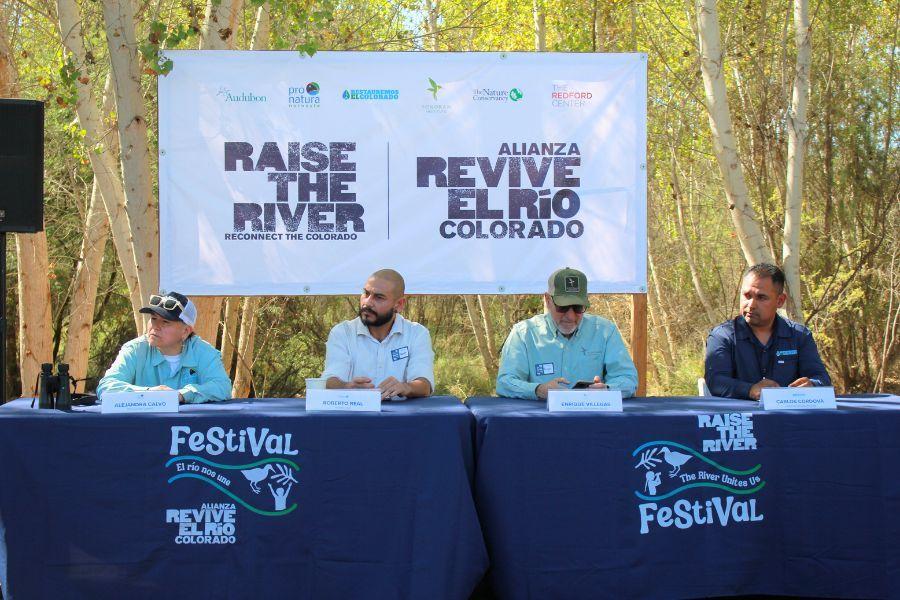 Alejandra Calvo, Pronatura Noroeste; Roberto Real, The Nature Conservancy Mexico; Enrique Villegas, Sonoran Institute; and Carlos Córdova, Restauremos El Colorado during the Revive El Rio festival in October 2025. Source: Daniela Reyes.
Alejandra Calvo, Pronatura Noroeste; Roberto Real, The Nature Conservancy Mexico; Enrique Villegas, Sonoran Institute; and Carlos Córdova, Restauremos El Colorado during the Revive El Rio festival in October 2025. Source: Daniela Reyes.
The deterioration of the river affects biodiversity and communities in Mexico and the United States, so these countries signed two agreements for the restoration of this habitat.
With that objective, the Revive the Colorado River alliance emerged, which is an association of six Mexican and American non-governmental organizations working to restore the Colorado River Delta. The organizations are the National Audubon Society, Pronatura Northwest, Restauremos el Colorado, Sonoran Institute, The Nature Conservancy and The Redford Center.
The alliance seeks to strengthen the ecosystem's resilience to variations in water availability and extreme environmental conditions.
Thus, they have managed to plant 500,000 native trees and 540 hectares of restored coastal habitat along the main riverbed.
The restoration of El Chausse
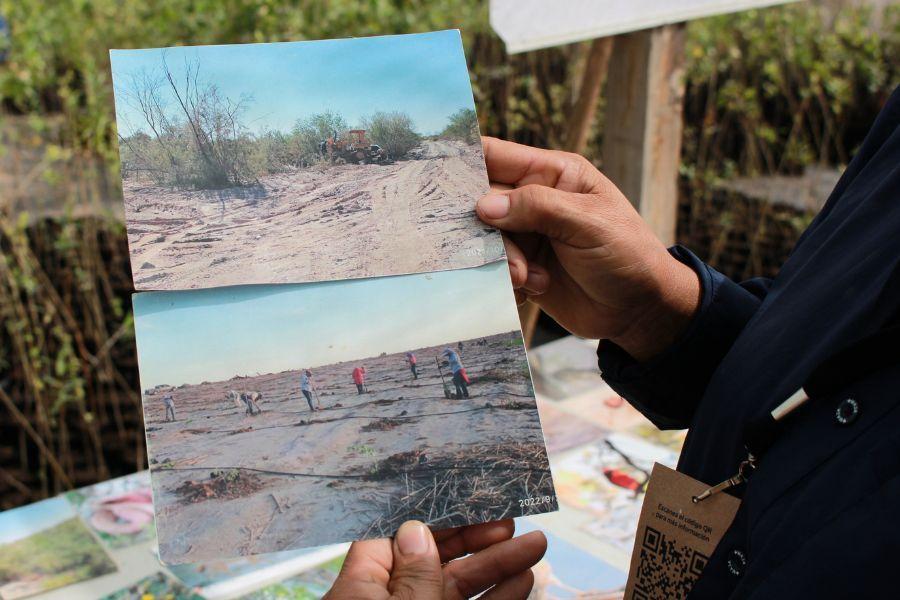 The image above shows what El Chausse looked like when the restoration work began and below what it looked like after removing the invasive exotic vegetation: Source: Daniela Reyes/ original photos of Restauremos El Colorado.
The image above shows what El Chausse looked like when the restoration work began and below what it looked like after removing the invasive exotic vegetation: Source: Daniela Reyes/ original photos of Restauremos El Colorado.
The first time Carlos Córdova, a member of Restauemos El Colorado, visited El Chausse, it was full of salt pine and reeds, two invasive alien species that hogged all the water and displaced native species.
“If you had come ten years ago you would not have found this forest,” said Córdova in his speech during the Revive El Rio Festival, an annual celebration organized by the alliance to share the results of the restoration and connect with communities and other local projects.
The first step in bringing El Chausse back to life at the end of 2015 was to remove invasive exotic plants and create a nursery with native plants to forest and convert the remaining flat terrain into a forest.
“Most of the species were invasive exotic plants and there were also some long-lived poplars, but these trees were under water stress because they were competing for lack of water. We came and removed the exotic plants, and to put something of better quality we had to get native plants and create the capacities for the community to produce them,” said Córdova.
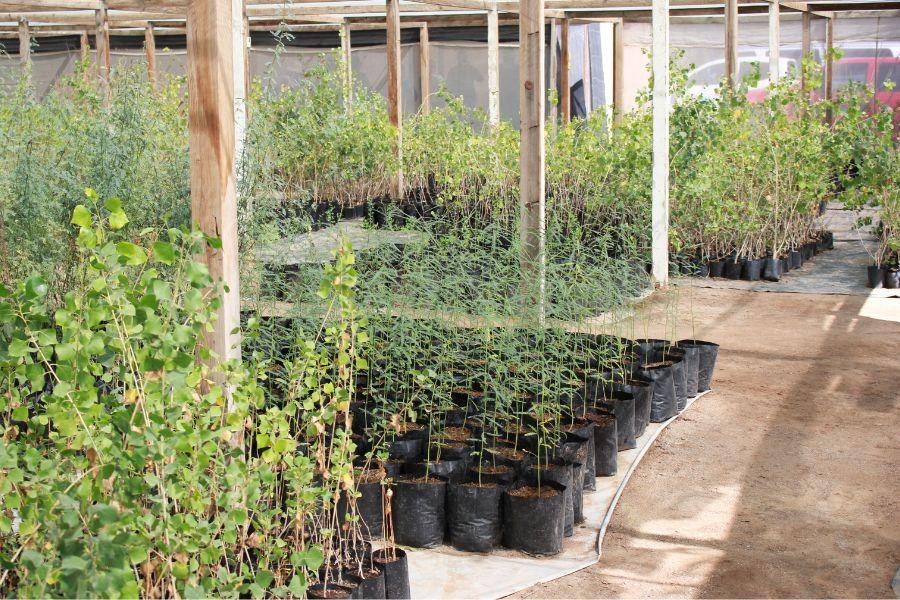 El Chausse nursery where poplars and mesquites can be seen. Source: Daniela Reyes.
El Chausse nursery where poplars and mesquites can be seen. Source: Daniela Reyes.
Currently, the forest is full of poplars that in nine years have already reached 15 meters in height, and mosques with canopies up to 15 meters long.
Thanks to hydrological monitoring and the design of an irrigation system, trees receive the amount of water they need without wasting a single drop affecting the river, according to Ángel Benavent, executive director of Restauremos El Colorado.
The team of the organization led by Benavent is responsible for restoring El Chausse, so they work daily on maintenance and monitoring days of the forest.
“We do all the hydrological measurement. That's where we see what level is where the groundwater should be and so we can take care when trees need water. While the restoration team monitors the number of individuals that survive, the new ones that emerge, how they evolve and the local fauna,” Benavent said.
Unlike 10 years ago, when walking through El Chausse you can hear the sound of poplar leaves moving with the wind and the singing of the birds that live in the forest, both of which are important indicators for evaluating the success of the restoration.
Habitat recovery
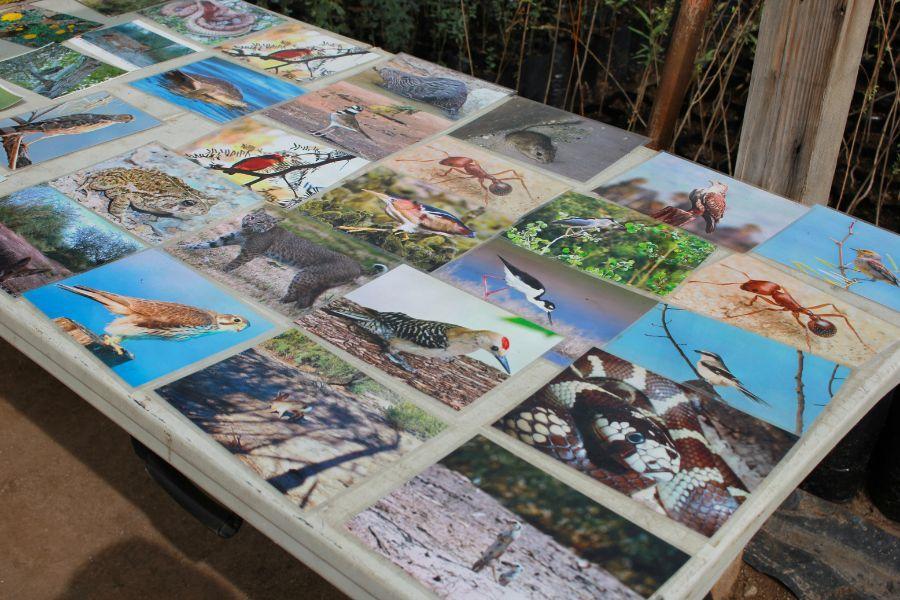 Species that have been recorded in El Chausse. Source: Daniela Reyes.
Species that have been recorded in El Chausse. Source: Daniela Reyes.
The Mexicali Valley region has lost 80% of its wetlands, an ecosystem of great importance for birds, according to Alejandra Calvo, biological monitoring coordinator at Pronatura Noroeste.
“This site is critical for birds, and these restoration works are important to provide habitat, food and shelter for the 14 million birds that come in the fall and 17 million that come in the spring,” said Calvo.
The coordinator is responsible for evaluating the impact of restoration on the diversity and abundance of birds. Through monitoring carried out at restored sites, 85% more birds have been registered.
“When we did a baseline monitoring in El Chausse, we only found approximately 20 types of bird species, now we can observe more than 150 depending on the season. Thanks to these forests, they can continue their migratory journey to their destination,” said Córdova.
They also monitor wildlife through 12 camera traps in El Chausse and other nearby restoration areas. Through monitoring, they have noticed a recovery in the area's beaver population, which is an endangered species according to NOM-059.
“We have observed that beaver populations have grown. At the beginning we only saw one or a couple, and now we find families interacting at different points,” said Córdova.
Another indicator of success is that, through vegetation censuses, they have identified that natural recruitment increased by 30% from 2017 to 2023.
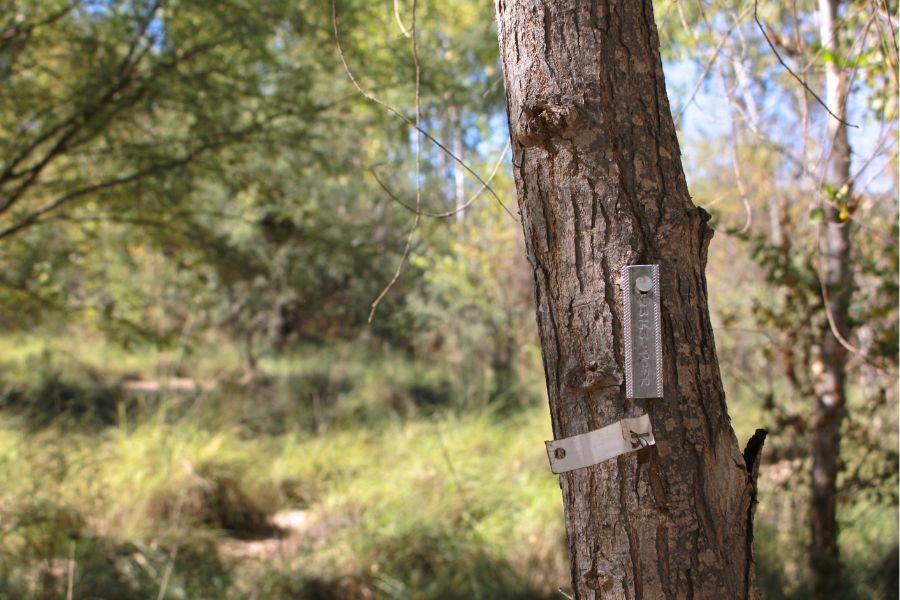 Poplar with its plate from the vegetation census carried out in 2022 in El Chausse, where its scientific name and identification number are indicated. Source: Daniela Reyes.
Poplar with its plate from the vegetation census carried out in 2022 in El Chausse, where its scientific name and identification number are indicated. Source: Daniela Reyes.
“Apart from the trees that we have planted, many more have been born naturally through the natural dispersion of seeds. For us, it's very important that it regenerates naturally without human intervention,” said Córdova.
Until 2022, there were more than 30,000 trees in the forest on approximately 64 hectares covered by El Chausse.
By restoring this forest, not only have they helped to improve the river and the valley, but it is also a great green lung for Mexicali, an industrialized city with high temperatures and few trees.
“The Mexicali Valley was born because water flowed through this river and it seems to me a tremendous tragedy that today we don't have it flowing like in those years. As a Baja California resident, it's very significant and beautiful to be able to see it restored,” said Roberto Real, hydrologist at The Nature Conservancy Mexico.



Comentarios (0)